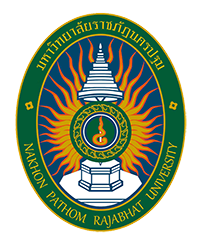 การประชุมวิชาการระดับชาติ ครั้งที่ 16
|
| Title | A Study of Scara Robot Vibration Behavior by Computer Aided Engineer Program |
|---|---|
| Other Titles: | การศึกษาพฤติกรรมการสั่นสะเทือนของหุ่นยนต์สการ่าโดยใช้โปรแกรมช่วยทางวิศวกรรม |
| Authors EN |
|
| Authors TH |
|
| Keywords | Vibration,Robot Movement,Controlling the Scara Robot,Vibration Analysis |
| Issue Date | 13-Aug-2024 |
| Publisher | The 16th NPRU National Academic Conference Nakhon Pathom Rajabhat University |
| Abstract | This research is a study of the movement behavior of the Scara robot. The objective is to study the distance of displacement that occurs along the X and Y axes at the end point where the Scara robot arm moves. Due to changes in speed and acceleration, vibrations and intolerances are created at the endpoints, which are experimented with by setting the speed and acceleration that the Scara robot driver divides into several values. To see the trend of axial discrepancies occurring by using a sensor device to measure the distance of movement of the two Links and record the value in a time range, from the 0th moment at the beginning to the last moment the Scara arm moves to the endpoint, then using SolidWorks to simulate 3D images to find the tip of the Scara arm at different seconds to plot the results obtained from the actual experiment. It was compared with a graph obtained by mathematical modeling by MSC Adams, which obtained similar results. The resulting position discrepancies are very small, and the time it takes to move decreases slightly as the speed increases. Whereas, if experimented by increasing the acceleration and giving a constant speed. Position discrepancies are also very small, but the time it takes to move is significantly reduced. And by matching the results between the actual experimental results and the MSC Adams program model, it is possible to predict the optimal speed and acceleration to be used in the work. The time generated by this velocity and acceleration can be used to calculate the UPH of the manufacturing process or adjust to the best UPH by selecting the speed and acceleration affecting the least tolerance of position.
In this research, we were able to use the torque values obtained from the MSC Adams program graph to help select the size of the SCARA robot in machine design to reduce the cost burden that may arise from the error of choosing a motor size that is smaller or larger than necessary.
|
| ISBN | 978-974-7063-46-2 |
| URI | https://rdi.npru.ac.th/conference16 |